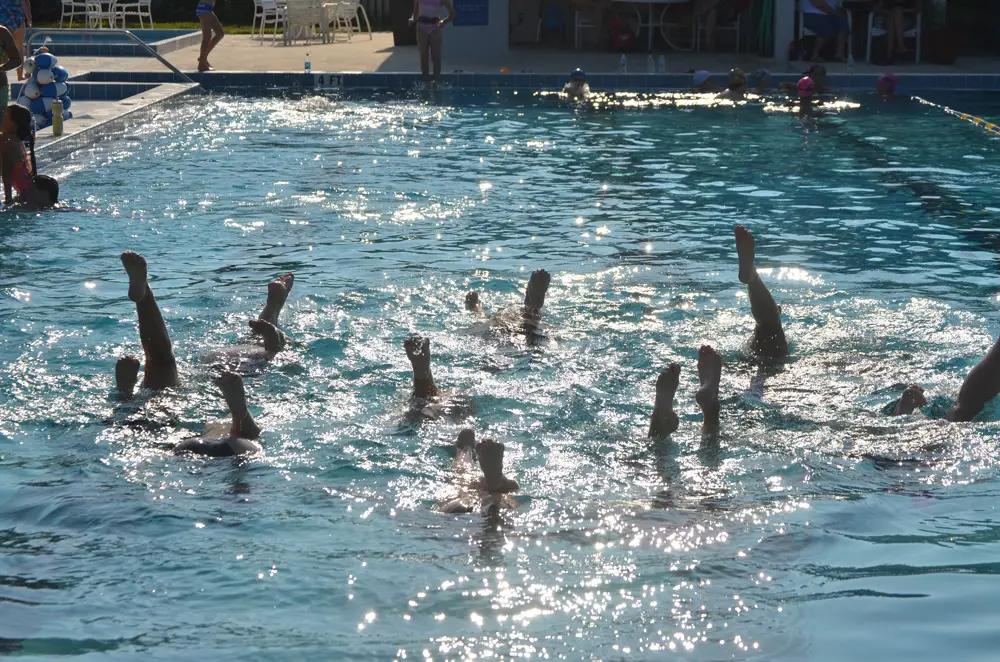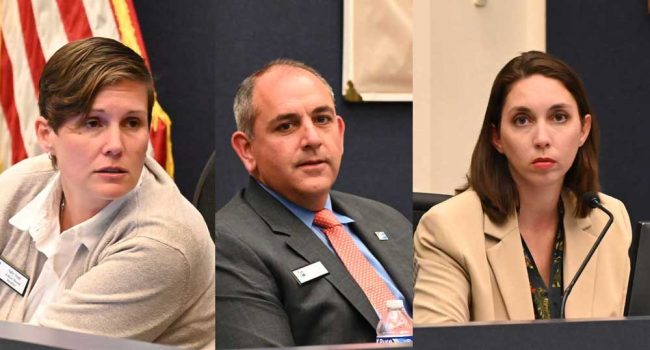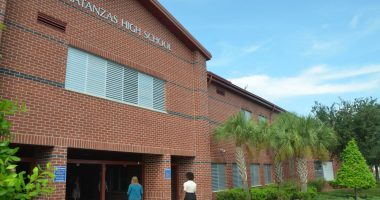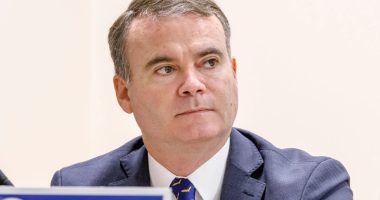
If they could have voted on it Tuesday, Flagler County School Board members Will Furry, Christy Chong and Sally Hunt would have closed the Belle Terre Swim and Racquet Club to the public. They would have turned the 11-acre club gifted to the school board by ITT in 1996 into a facility for students and school programs only, with the exception of swimming pool rentals to other clubs or parties.
It may yet come to that sooner than later. Superintendent LaShakia Moore and School Board member Cheryl Massaro meanwhile put the brakes on, as the board spent its latest of more than a dozen discussions since July 2022 turbidly debating, interpreting, and disagreeing over the latest set of revenue and shortfall numbers the administration presented to them. They’ve asked for yet more numbers, which will be delivered to them by email, but Furry invited any one of his colleagues to bring up the matter at a coming meeting for potential action–meaning closure.
“Let’s get the information and then at our next workshop, if somebody wants to bring that to the next agenda, they can bring that forward,” Furry said. “But let’s have all the data so we can truly make sure that we all have the right information.”
The right information has been a central point of contention since the district administration and the board have been debating the numbers, usually with Josh Walker, the district’s point man, in the middle. He was there again Tuesday for a scheduled update on the club’s health. It wasn’t supposed to lead to another discussion about closing the place up, though Hunt was relentless about it, with Chong and Furry wondering why it was necessary to delay a decision.
“You as a board,” Moore said, “still have to make a determination of what your objective is.”
“We made a motion when we did this big discussion way back when,” Board member Cheryl Massaro said, referring to the board’s 3-2 vote last May to give the club another chance to prove itself, at least until next summer, the timeline Chong allowed. “This is the first update. There’ll be another update in July. And August we will make the final call.”
Based on the numbers Walker presented, the club is still not doing well. But those numbers were not complete, Board member Colleen Conklin argued, and if they were, the club would be near the break-even point.
The club ended the last fiscal year with revenue of $152,264, of which $25,000 was contributed by county government. (That’s part of the “legacy” spending the county now wants to possibly end.) Straight memberships produced only $48,894 in revenue. The balance was from users whose health insurance plan allows them to use the club. Each visit generates revenue for the club.

Last year the club accrued $335,000 in operating expenses. That includes $213,000 in salary and benefits and $50,000 in utilities. The operating deficit was $182,736. Advocates of the club like Conklin, Massaro and Doug Courtney, a club champion, have strongly criticized the way the district accounts for those figures. By Courtney’s accounting, including certain numbers in results in an operation $35,000 in the black. (Watch Courtney’s statement to the board Tuesday here.)
This year revenue is budgeted at $175,000, with a projected loss of $177,000. Operating costs are rising. Chlorine alone has increased 40 percent a gallon. With seven months of the fiscal year already completed, revenue to date is $82,000, not including the county’s $25,000 contribution.
The board has previously discussed closing the club to the public and running it as a student-centered operation. That would cost $136,000 “regardless,” in Moore’s description. That means there would be no membership or insurance revenue, only potential revenue from renting out the facility. In the district’s circuitous interpretation, that means that the facility would need to generate over $200,000 to break even. So whether the club is run with members or without, it would still lose money based on today’s revenue.
Yet again, however, last year’s figures and the projections did not include revenue from such clubs as the Synchro Belles, clubs that regularly rent out the facility and generate additional dollars. Lack of complete numbers had been an issue last year almost every time the board would discuss the club. It was the case again on Tuesday, as Conklin pointed out. Those rentals from the Synchro Belles alone generate about $1,200 a month, Walker said. That would defray yet another $14,000 or so. District officials say that’s considered “internal” revenue, not revenue owed the club. Conklin did not accept that.
“I know we’ve disagreed on this like a zillion times, but that money, basically they’re paying that facility to rent that space,” Conklin said. “Why in the world would we not consider that revenue for that space for that program?”
Moore said the additional numbers won’t change the fundamentals. “We can absolutely bring that information for to you. But I don’t think that it changes the $136,000 and it doesn’t change the $300,000.” She had rounded the operating costs to $300,000.
But there’s no question that usage at the facility is anemic. The club has 1,002 “members,” but the district has redefined the term to make it more expansive than it used to be. That figure includes 748 single-use entries into the club by people who take advantage of their insurance benefits, which pay for that use. Some people use the club one time that way, some use it more than once. Either way, the insurance companies pay.
Actual “basic” members in the traditional sense of the term include just seven annual adult memberships at $250 each, 30 monthly memberships at $25 a month, and 13 student monthly memberships, at $15 each. The basic membership includes use of the gym and the tennis courts, but not the swimming pool. The “aquatic plus” membership, which adds the pool and the sauna, has 14 annual members paying the $420 annual fee, and 15 paying the monthly $55 fee. Just two families are paying the annual $750 family membership.
Will Furry complained that the numbers were shifting. They were being presented based on certain premises that not all board members agreed on. For example, the $136,000 operational expense includes $8,500 to heat the pool, $40,000 to staff it. But depending on how the facility is used, especially if it’s used only as a student-focused facility, “that will offset some of that cost, and we may not need all of these line items in that scenario,” Furry said.
Conklin doesn’t disagree that the numbers are shifting. But they’re shifting the other way. She sees numbers slanted against showing what would otherwise be a much healthier balance sheet. The facility is costing $350,000 to operate with memberships, but would cost $136,000 even if it was closed to the public, she said. That leaves the district looking for $215,000 to break even. This year’s projected revenue is $175,000, not including at least about $14,000 expected from facility rentals, probably more. That brings total revenue to $189,000, what Conklin says is just about “a wash.” (The gap would be $25,000.)
“There’s not over $100,000 in loss,” Conklin said.
But the Flagler County School Board is often where facts go to die at the hands of predetermined board members. When Conklin pointed out that the colub was being run for the community as ITT had run it, and as ITT intended it to be run when it gifted it to the district (“it was gifted to us for exactly the purpose that is being used for,” Conklin said), Hunt responded: “To me that’s more opinion.” But it isn’t.
“It has served its purpose but I think it’s run its course. It’s costing us way too much money,” Furry said. “There’s other costs that might also go down in here if we weren’t running it as a club.” He thinks there would be a “much bigger difference” between running the facility as just a student-centered facility as opposed to a membership facility. “All I’m saying is that at this moment from what I see of this facility, we’re still at $100,000 spread between a break even through memberships.” He had just come up with that figure.
“So do we want to keep going or do we want to address this?” Chong asked, apparently willing to subvert her own timeline.
“The other the end result in August is going to be: we’re going to lose money, and we know that today. Then why are we waiting until August?” Furry said. That’s when he invited one of his colleagues to move toward executing the club sooner at a coming meeting.
![]()
Click On:
|








